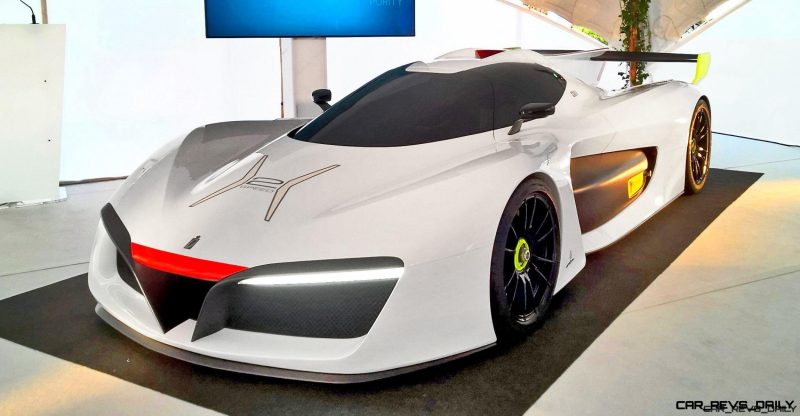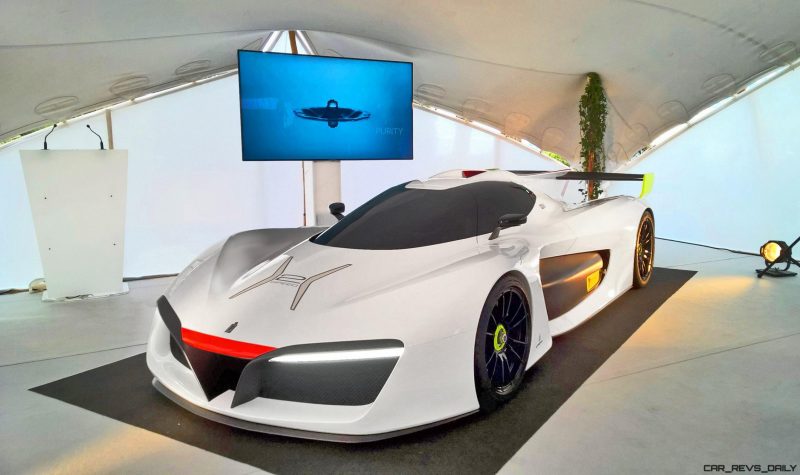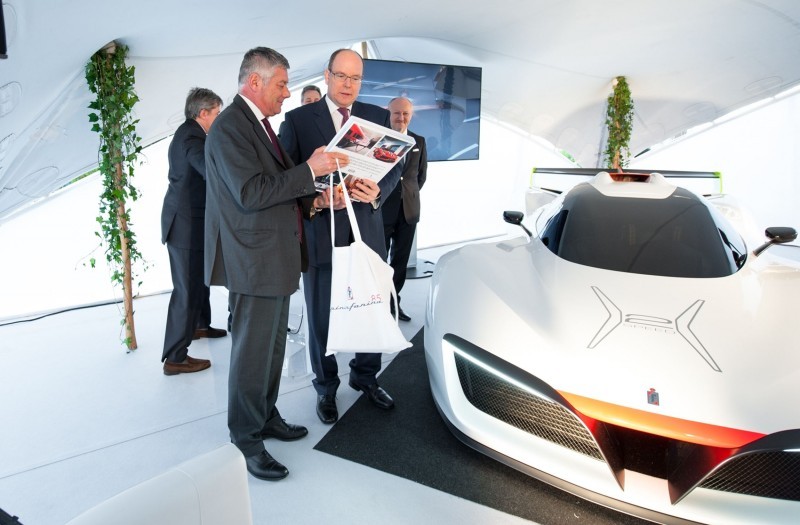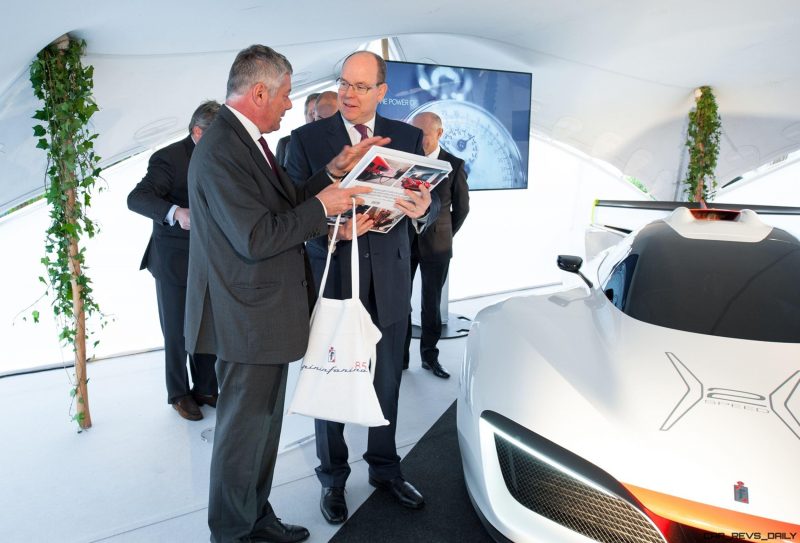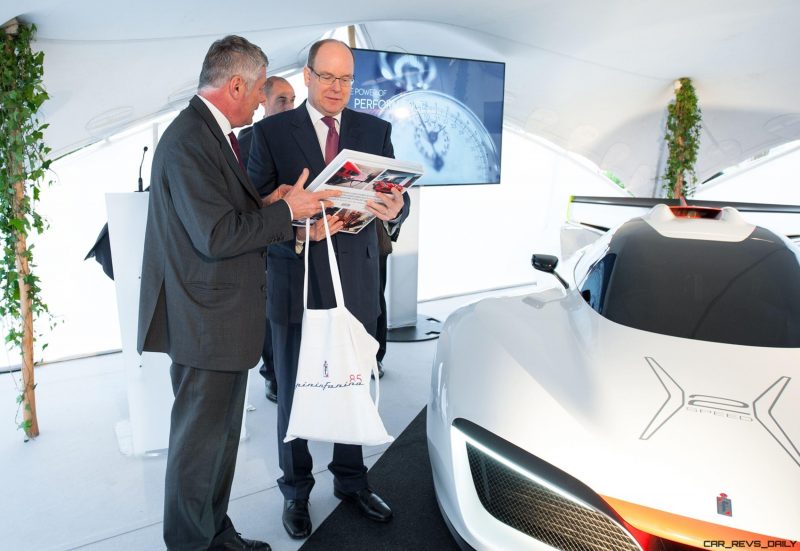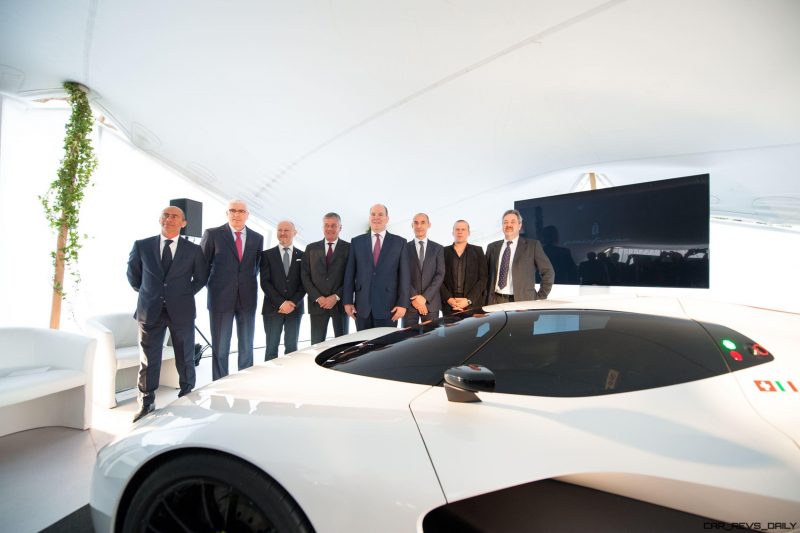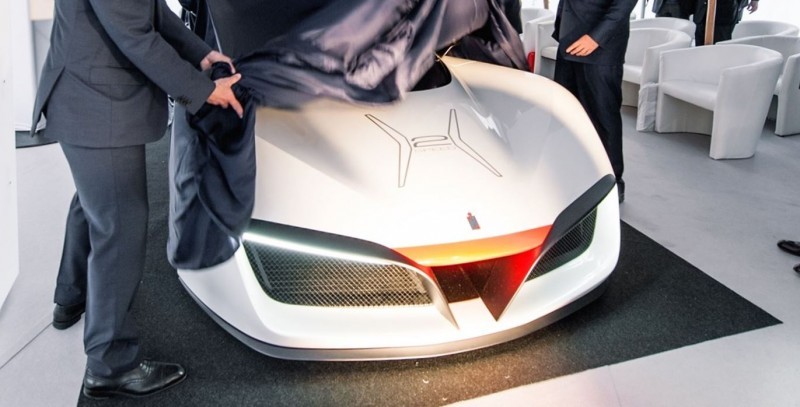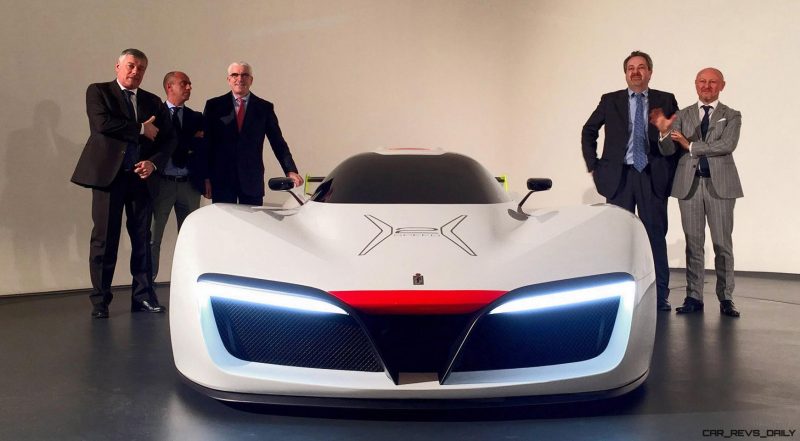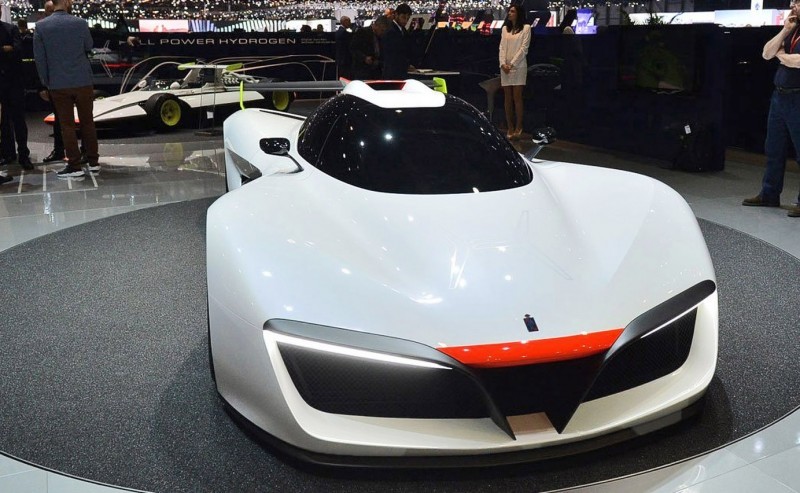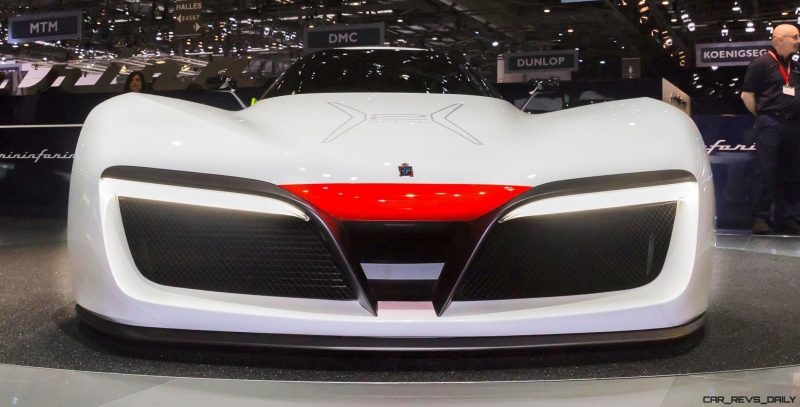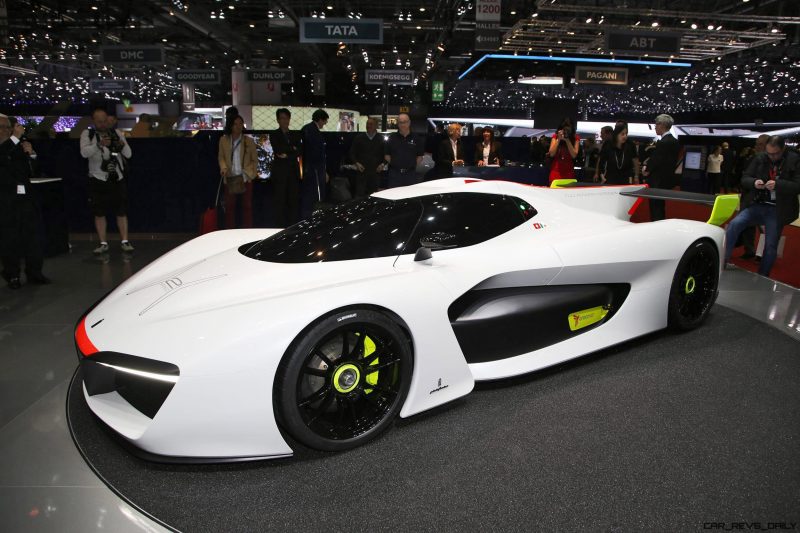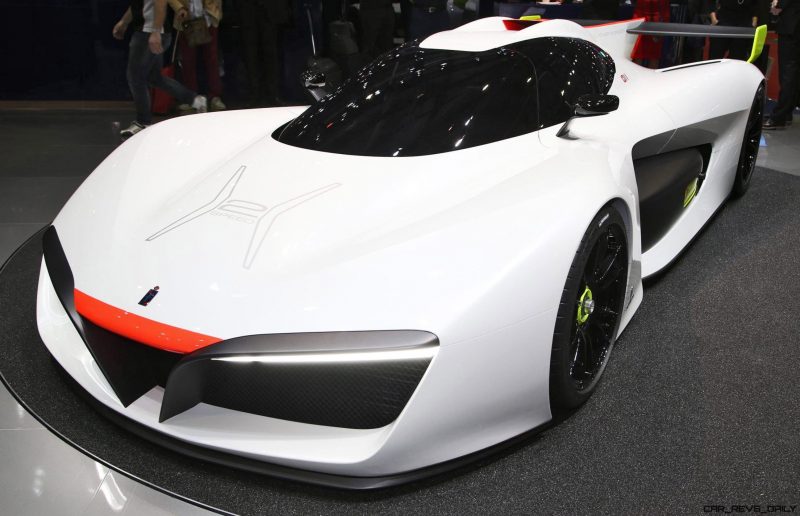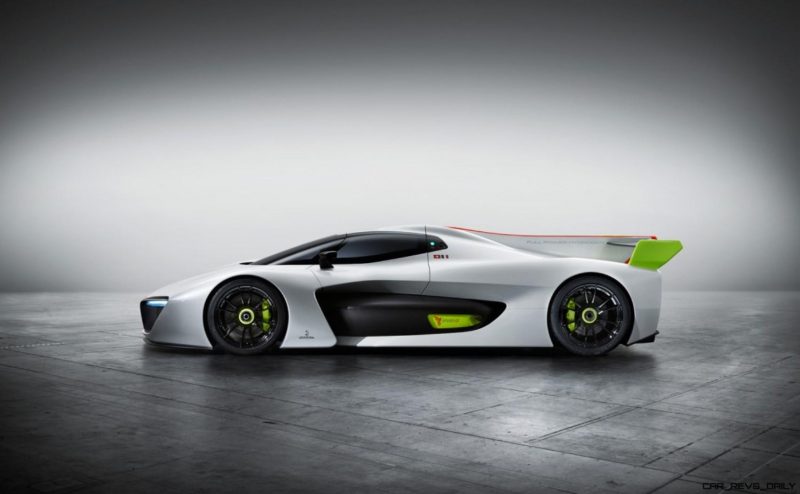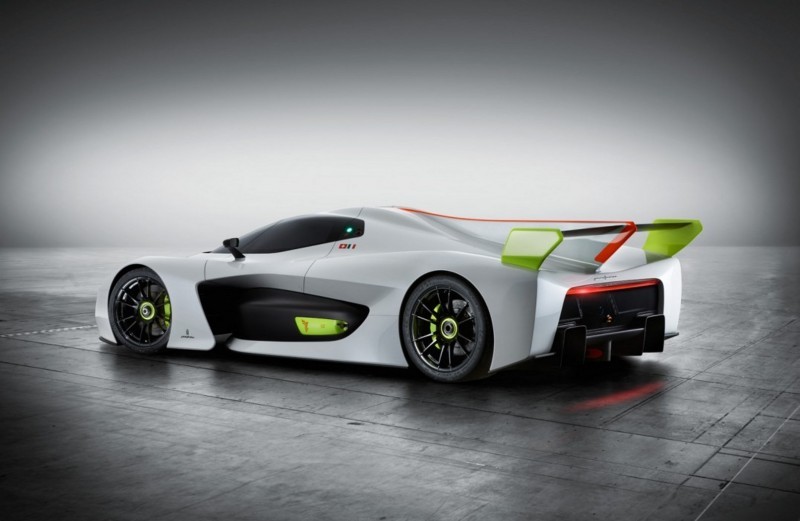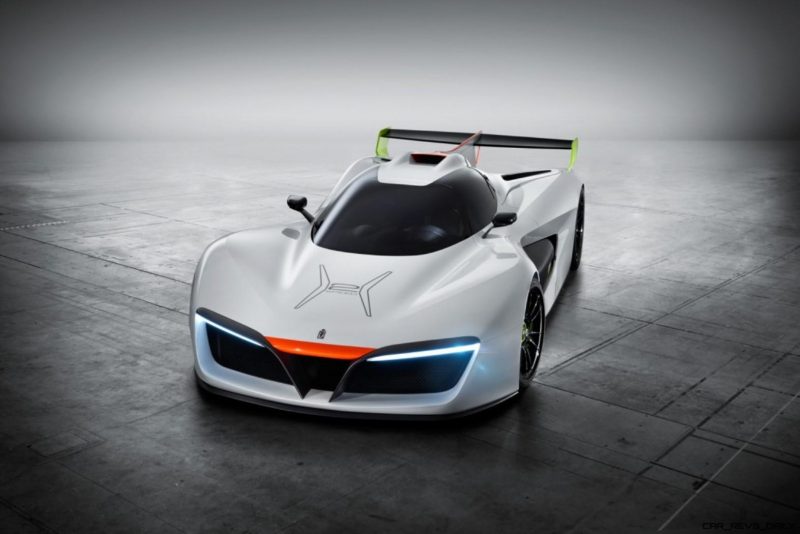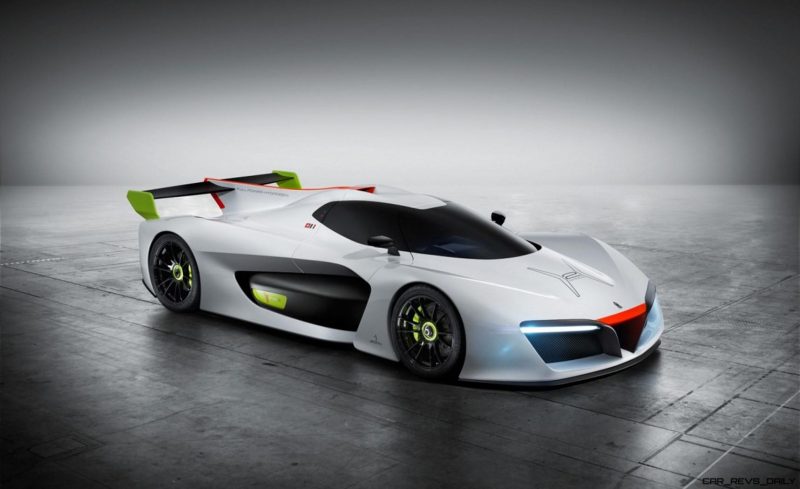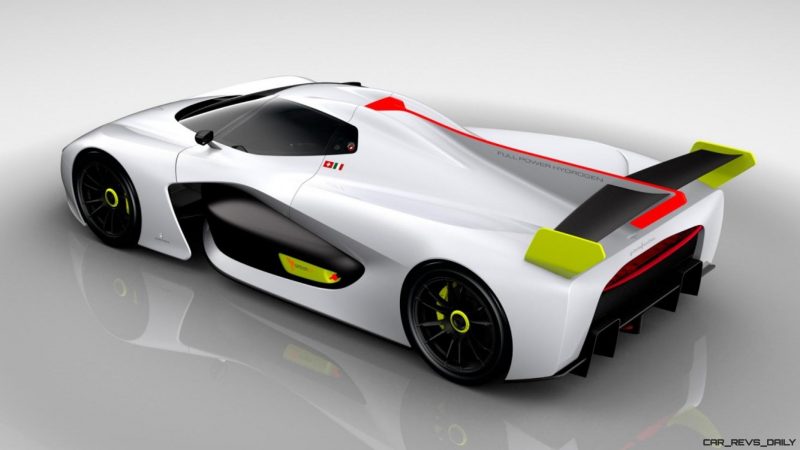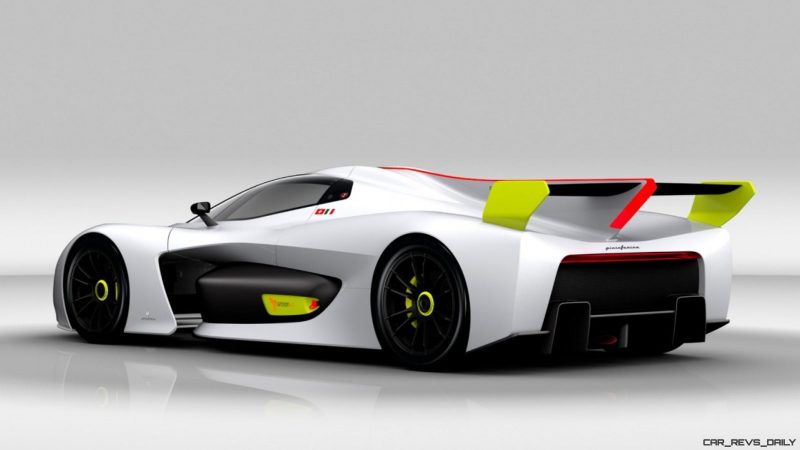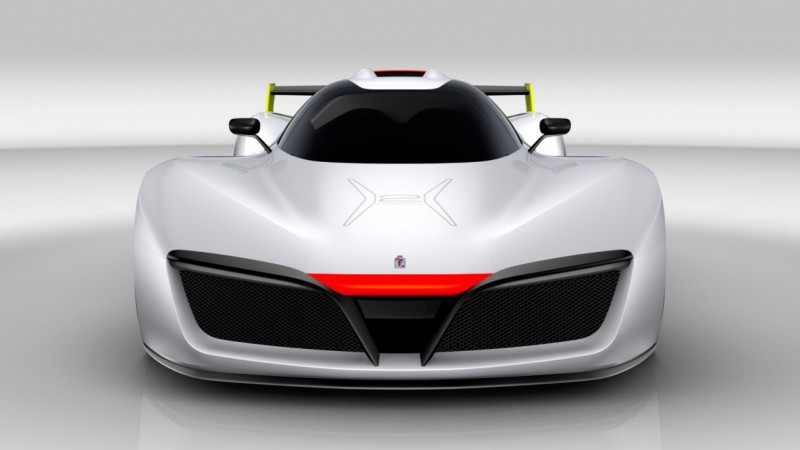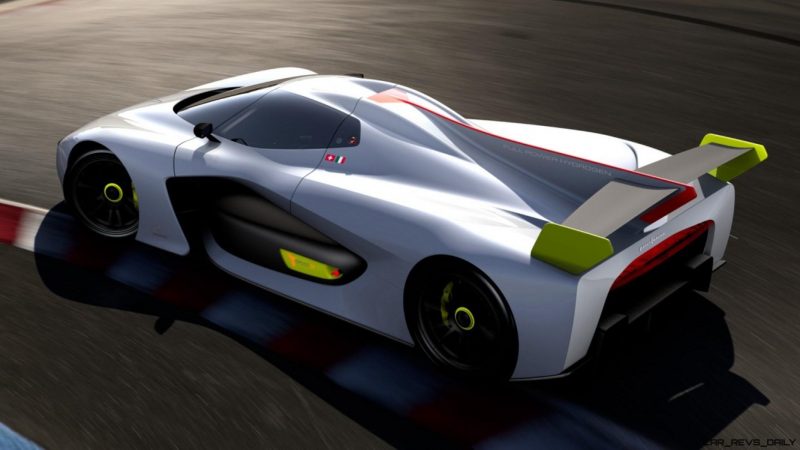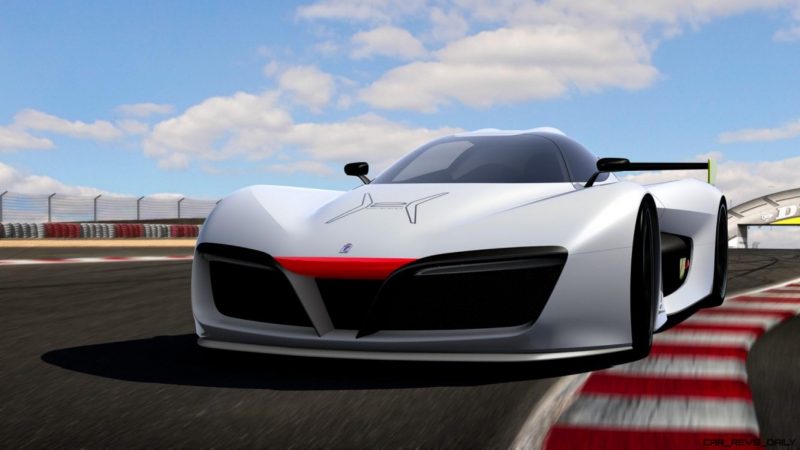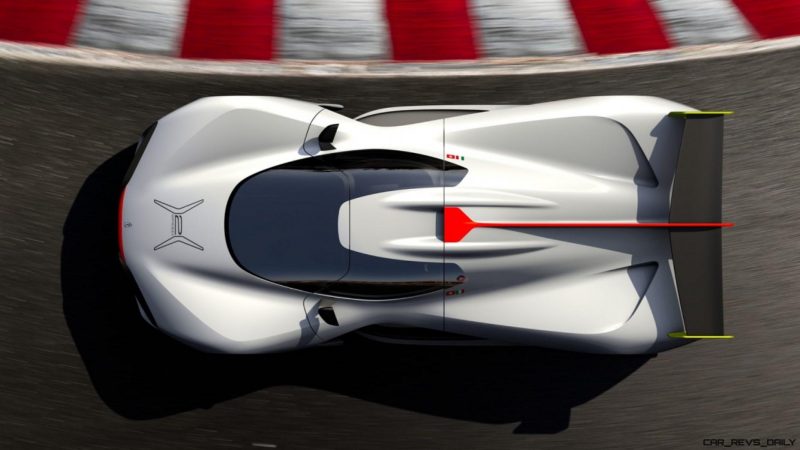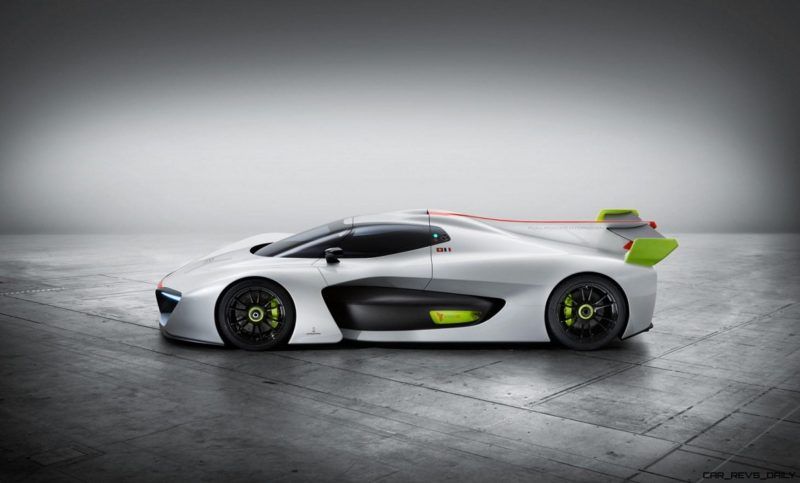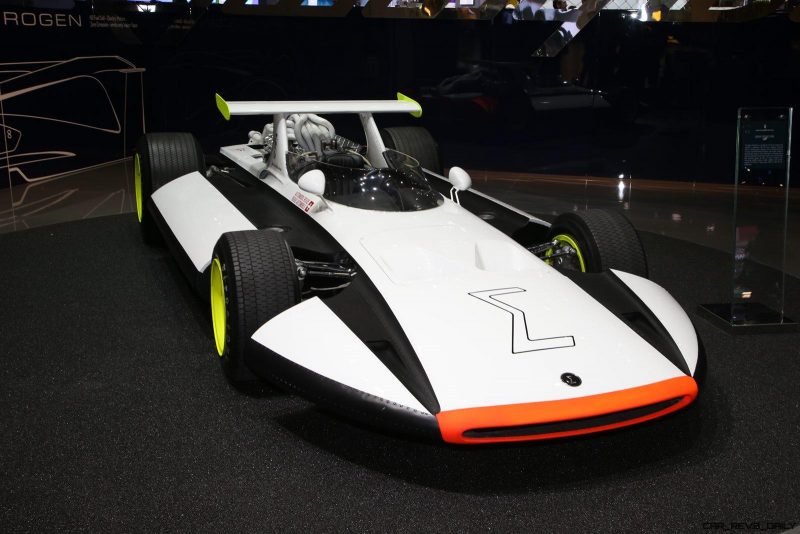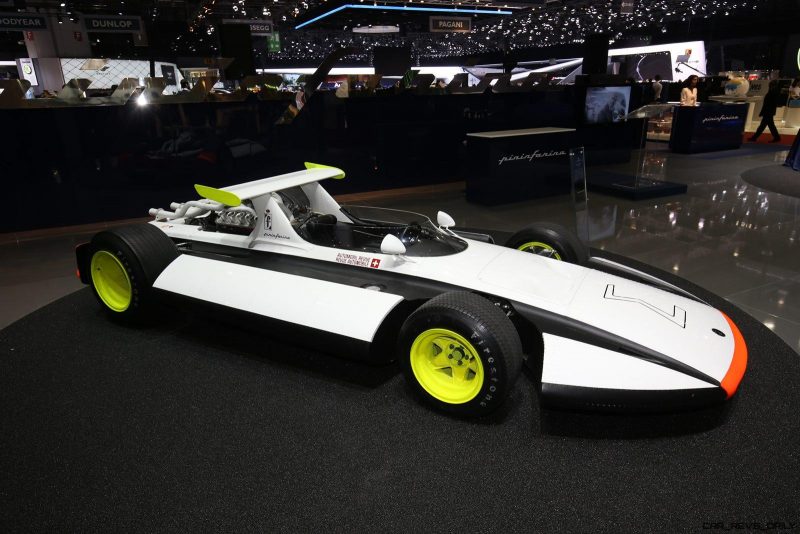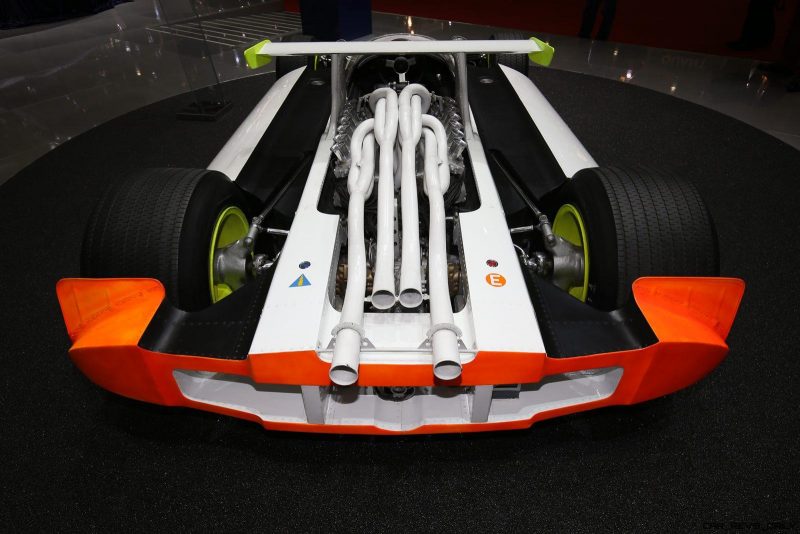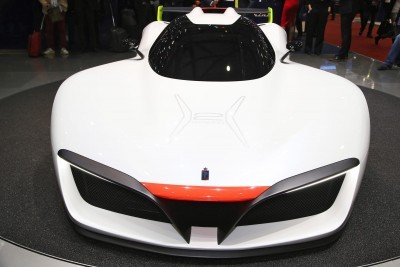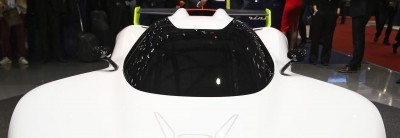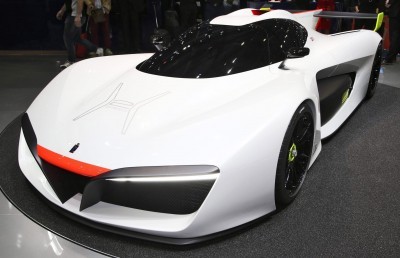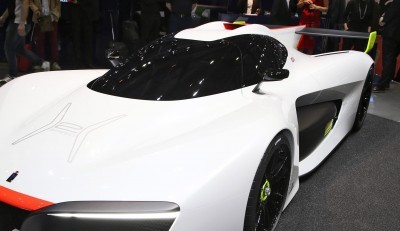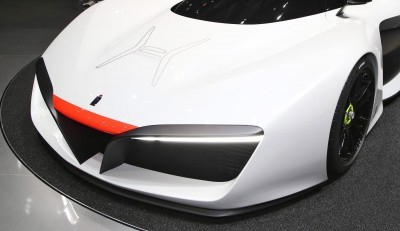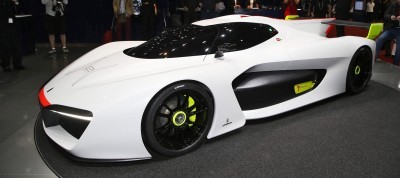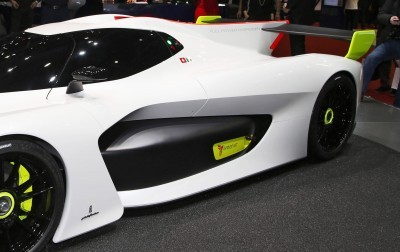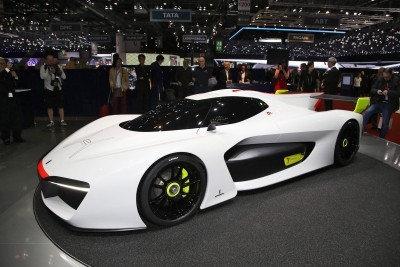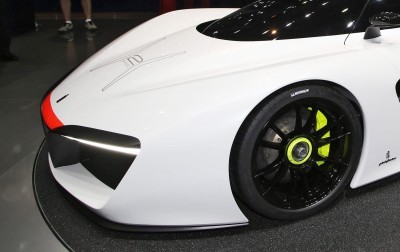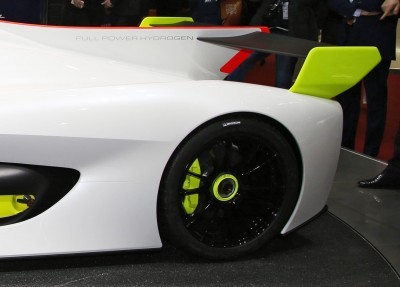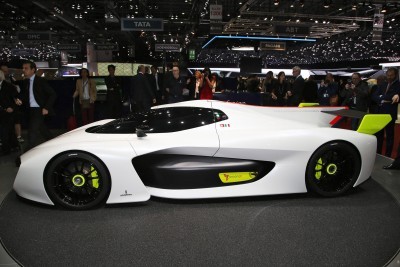The stunning Pininfarina H2 Speed just scored one of the highest honors in automobiledom: a royal invite to the palace of Monaco!
HSH Prince Albert was the honorable host for this glittery and exclusive look at a 503-horsepower exotic that runs on pure hydrogen. It combines the massive thrust of eAWD via potent electric motors, plus the rapid-refill potential of hydrogen. Not quite an open-road dream versus gasoline’s ubiquitous availability, but the H2 Speed does show promise for an all-day blast around a racetrack. This is something that no full EV can promise, as their batteries go dead in about an hour of max-attack driving. And won’t be ready for more until hours and hours later.
The principality of Monaco is quite an active green champion these days. They are some of the founding partners of the Venturi Automobiles, Venturi GP in FIA Formula E and the Venturi land speed record racecars.
Clearly, they are trying to put all that good money to great use. For the greater good.
Smiles all around from the royal court. We hope Pininfarina made some powerful new friends, as the Green GT brand needs a kickstart to catch up with Tesla, Faraday Future and now TechRules, an upstart Chinese venture that also debuted their EV hypercar at Geneva the other week.
Check out the H2 Speed making fast friends in the pics below, plus the full design analysis below that.
2016 Pininfarina H2 Speed – Monaco Private Debut
Official Pininfarina Communique:
H.S.H. Prince Albert of Monaco discovers the H2 Speed
H.S.H. Prince Albert invited Green GT and Pininfarina to present him, on the Prince’s Palace square of Monaco, their electric-hydrogen fuelled supercar: the H2 Speed
Monaco, March 31, 2016 – Monaco hosts the automobile revolution. On the occasion of a private presentation, H.S.H. Prince Albert received in a friendly and passionate atmosphere the team of Green GT and Pininfarina who presented to him the particularly innovative automotive project that they jointly developed: H2 Speed, the world’s first electric-hydrogen, high performance car.
H2 Speed, a showpiece of style and technology in the name of sportiness, performance and pure, environmentally responsible driving fun, debuted at the last Geneva Motor Show. The H2 Speed is Pininfarina’s innovative vision of a high performance track car based on revolutionary hydrogen fuel cell technology already subjected to severe track testing by Green GT.
Very attentive to sustainable technologies and to entrepreneurs who invest in this way, H.S.H. Prince Albert proposed to Jean-Michel Bouresche, head of Green GT Technologies, to come and visit him at Prince’s Palace in order to let him discover the latest project developed by Green GT with Pininfarina, the H2 Speed concept.
Together with Pininfarina representatives, Jean-Michel Bouresche presented the amazing supercar boasting shapes as futuristic as the technology behind. H.S.H. Prince Albert then extensively conversed with his guests, including the Director of Research and Development Green GT, Jean-François Weber, Chairman Paolo Pininfarina, CEO of Pininfarina Silvio Pietro Angori, Chief Creative Officer of Pininfarina Fabio Filippini, Design Vice Director of Pininfarina Fabrizio Valentini, and with Olivier Panis. Winner of the Monaco Grand Prix F1 1996, the French champion is indeed the test driver of the H2 Speed and the ambassador of the project.
The H2 Speed will appeal to passionate people who love speed, performance and innovation and, at the same time, are attracted by the exclusivity typical of a Pininfarina-designed vehicle produced in a limited series. Halfway between a racing prototype and a production supercar, the H2 Speed is the world’s first hydrogen, high performance car thanks to the ‘Full Hydrogen Power’ technology presented by Green GT, a powerful electric-hydrogen fuel cell drive chain. The result is a zero emissions vehicle that can reach 300 km/h while releasing just water vapour into the atmosphere. With a maximum power of 503 horsepower, the engine accelerates from 0 to 100 km/h in 3.4 seconds. Also notable is the rapid refueling, unknown to traditional electric cars: a full tank of hydrogen takes just 3 minutes. The H2 Speed almost completely eliminates noise pollution too, the sound emitted by the motor being close to total silence.
With the H2 Speed, Pininfarina confirms its commitment to excellence in design and research applied to sustainable mobility, the strong points of a company that is also intensively occupied in engineering services and in the development of special cars and limited series of exclusive models.
www.pininfarina.com |www.facebook.com/PininfarinaSpA|Instagram @pininfarina_official
www.youtube.com/pininfarinaofficial | store.pininfarina.com
DESIGN ANALYSIS
There is certainly promise in a 180-second refill from a hydrogen station, then all the benefits of a full-EV drivetrain.
Namely, SPEED!
The H2 Speed is quoted at some quite impressive figures. 100-kph flashes by in a 3.4-second whir, and on to a max speed of 186-mph.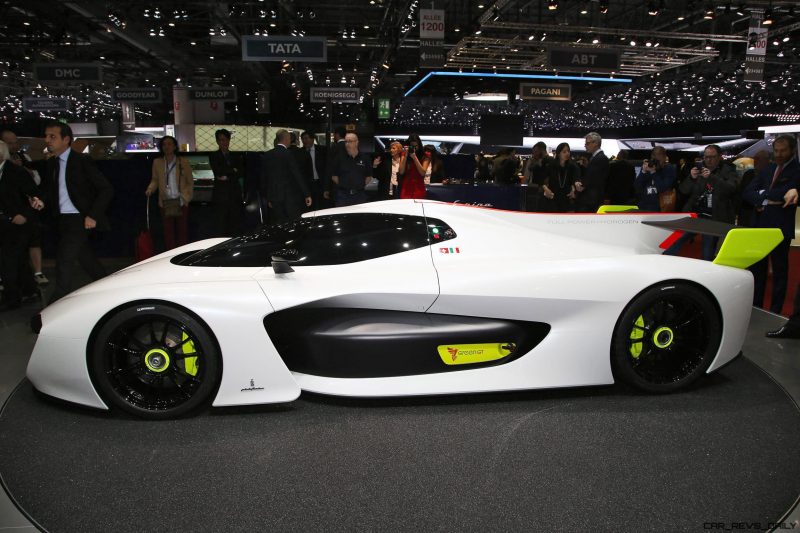
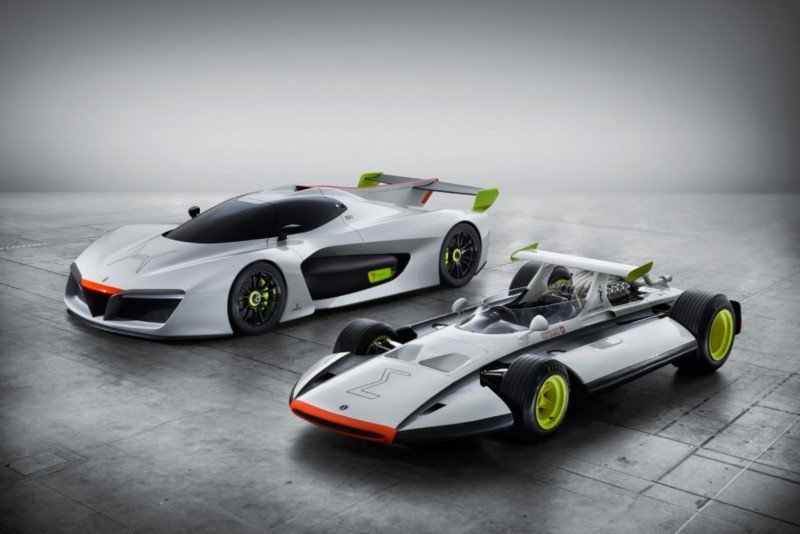
DESIGN ANALYSIS
All this is wrapped in the purest snow white panelwork you’ve ever seen. The bubble-like nose and fenders are masculine and aggressive, yet also friendly and high-tech in appearance. The smooth flow is broken up nicely in the nose with twin airfoils in contrast black at either edge of the bumper. A flat-plane leading nosecone in bright red-orange is a masterful style flourish along with the invisible LEDs below those black winglets. Until lit up, the H2 Speed’s nose is pure track purpose — without any distracting headlamp units to break up the serene, surreal panel flow over the hood.
A black-tinted glass canopy mounts the two passengers quite close to one another, but again contributes greatly to its hypercar stance and visual impact. Behind twin side windows and integrated windshield, a body-color air scoop extends up to the top of the roof quite elegantly. 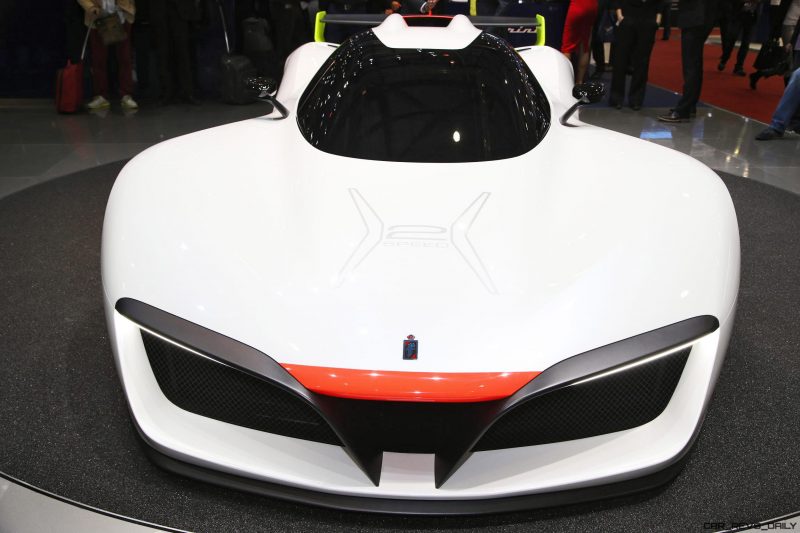
The entire central portion of the bodywork actually pulls inward tightly, including a contrast-black knuckle of air outlet behind the front fenders. The tailfin and giant fixed wing look LeMans- (or Gran Turismo~!) ready, as does the massive rear diffuser and horizontal LED brake light bar.
The design of the H2 Speed is quite special. We love its neon yellow accents — and the incredible matchup to the style of a previous Pininfarina hit: the 1969 Sigma Grand Prix.
This prototype Sigma explored safety solutions in open-wheeled and F1 racing — many of which were adopted a few short years later.
2016 Pininfarina H2 Speed
Pininfarina at Geneva with the H2 Speed concept car
World debut at the Motor Show for the hydrogen-fuelled track car developed with GreenGT
The Sigma Grand Prix of 1969, symbol of Pininfarina’s commitment to research and innovation,
shares the stand
Turin, 1 March 2016 –The new concept car that Pininfarina is world premiering today at the Geneva Motor Show is called the H2 Speed. A showpiece of style and technology in the name of sportiness, performance and pure, environmentally responsible driving fun.
The H2 Speed is Pininfarina’s innovative vision of a high performance track car based on revolutionary hydrogen fuel cell technology already subjected to severe track testing by GreenGT, a Franco-Swiss company which has been designing, developing and producing clean, sustainable propulsion systems since 2008.
The H2 Speed will appeal to passionate people who love speed, performance and innovation and, at the same time, are attracted by the exclusivity typical of a Pininfarinadesigned vehicle produced in a limited series. Halfway between a racing prototype and a production supercar, the H2 Speed is the world’s first hydrogen, high performance car thanks to the ‘Full Hydrogen Power’ technology presented by GreenGT, a powerful electric-hydrogen fuel cell drive chain. The result is a zero emissions vehicle that can reach 300 km/h while releasing just water vapour into the atmosphere. With a maximum power of 503 horsepower, the engine accelerates from 0 to 100 km/h in 3.4 seconds. Also notable is the rapid refueling, unknown to traditional electric cars: a full tank of hydrogen takes just 3 minutes.
The H2 Speed almost completely eliminates noise pollution too, the sound emitted by the motor being close to total silence.
With the H2 Speed, Pininfarina confirms its commitment to excellence in design and research applied to sustainable mobility, the strong points of a company that is also intensively occupied in engineering services and in the development of special cars and limited series of exclusive models.
As Chairman Paolo Pininfarina explains: “The H2 Speed is the symbol of Pininfarina’s dedication to purity, elegance and innovation. The spirit of the project is directly linked to the great aerodynamic tradition often explored by Pininfarina over the decades as well as to our most recent dream cars. The present concept is a synthesis of technology, sustainability, harmony, aerodynamic flow and, above all, speed. And it is also the best way to confirm Pininfarina’s role as the standard-bearer of the aesthetic values of Italian design in the world and to strengthen its brand, the company’s true hallmark”.
“Italian style and engineering at the service of product innovation and the manufacture of high volume or niche special vehicles. This in a nutshell is what Pininfarina is today”. And MD Silvio Pietro Angori goes on: “The H2 Speed concept continues Pininfarina’s strategy of designing and developing special cars, namely vehicles produced in limited series for collectors and lovers of unique cars. The Pininfarina H2 Speed interprets the company’s passion for racing and exceptional, environmentally responsible automotive performance. It is a concentration of Italian styling and sustainable technology for gentlemen drivers and aficionados”.
The H2 Speed is part of one of Pininfarina’s main areas of research, that of racing car performance, aerodynamics and technology, as exemplified by the Lancia Aprilia Aerodinamica of 1937, the Fiat Abarth Monoposto Pininfarina Record of 1960, the Dino 206 Competizione of 1967 and the Lancia Beta Montecarlo Turbo Gruppo 5 of 1978. In this context, however, the most striking example is the Sigma Grand Prix of 1969 which is on show at Geneva alongside the H2 Speed. The Sigma reinterpreted and renewed the Formula 1 concept, introducing major safety content aimed at drastically reducing the risk inherent in motor sport. The work of an international team of experts, the prototype incorporated solutions such as safety tanks and the onboard fire-fighting system that were futuristic at the time but which are now routine.
1969 Sigma Grand Prix
H2 Speed
The Full Power of Hydrogen
Extraordinary performance, sportiness and pure, environmentally responsible driving fun. Its name is H2 Speed and it is Pininfarina’s innovative vision of a high performance track car based on revolutionary hydrogen fuel cell technology already subjected to severe track testing by GreenGT, a Franco-Swiss company which has been designing, developing and producing clean, sustainable propulsion systems since 2008.
H2 Speed will appeal to passionate people who love speed, performance and innovation and, at the same time, are attracted by the exclusivity typical of a Pininfarina-designed vehicle produced in a limited series. Halfway between a racing prototype and a production supercar, the H2 Speed is the world’s first hydrogen, high performance car. It is not by coincidence that its name joins together H2, the formula for gaseous hydrogen, and the English word Speed, as if to say that it is the force and energy of Nature that generate the vehicle’s high performance, fostering the excitement that is typical of passion and sport.
Seduced by GreenGT technology, Pininfarina has applied its mastery to express a style that communicates uncompromising beauty and a unique allure, combined with extreme performance. A pure beautiful form, free of any stylistic affectation.
Sculpted by efficiency-boosting aerodynamics, the H2 Speed weds blistering performance to refined lines and shapes integrated in a form of strong emotional impact which embraces the driver and represents the best possible expression of Pininfarina DNA: purity, elegance, innovation expressed through the passion that has always pervaded the world of high performance cars.
Research and innovation: Pininfarina’s roots
Global styling benchmark for 86 years, Pininfarina has always invested in research and development programmes to propose concepts and innovative solutions to the new challenges that continue to arise in the car industry. One of the main areas was that related to performance and to aerodynamic and technological innovation for racing, as seen in the Lancia Aprilia Aerodinamica of 1937, the Fiat Abarth Monoposto Pininfarina Record of 1960, the Dino 206 Competizione of 1967, the Lancia Beta Montecarlo Turbo Gruppo 5 of 1978. In this context, however, the most striking example was the Sigma Grand Prix of 1969, which reinterpreted and renewed the Formula 1 concept by introducing major safety content geared to drastically reducing the risk component inherent in car racing.
Starting from these examples, in a scenario of great attention to the most sensitive aspects of sustainability and emissions reduction, Pininfarina today proposes a new interpretation of its passion for motor car performance in an innovative and totally ecological key.
For this new styling and research exercise, it has used the hydrogen fuel cell technology developed by its partner GreenGT.
The power of a green engine
The technology presented by GreenGT is the substantial outcome of a two-year development and testing programme that has embodied the form of the H2 Speed concept. GreenGT proposes ‘Full Hydrogen Power’ technology, a powerful electrichydrogen fuel cell drive chain. The result is a zero emissions vehicle able to reach 300 km/h by releasing just water vapor into the atmosphere. With a maximum power of 503 horsepower, the engine accelerates from 0 to 100 km/h in 3.4 seconds. Also notable is the rapid refueling, unknown to traditional electric cars: a full tank of hydrogen can be done in only 3 minutes.
H2 Speed eliminates both air and noise pollution. The compressor gives the vehicle’s engine a very special tone, completely different to that of conventional electric cars. So even the noise made by the car is close to the emotion of silence, sounds and hisses that evokes science fiction.
External styling themes
Form and function merge together in the H2 Speed concept to create an external design that highlights the vehicle’s sportiness and performance in every detail. Lines and volumes outline a sculpture that is as powerful as it is intriguing. Although it is based on the traditional styling cues of sports cars (low, aggressive proportions, strong design and an emotional synergy between car and driver), the H2 Speed presents the designer with a two-fold challenge: to design a car on a carbon frame and on the mechanical layout of a high performance car of extreme proportions (length 4700, height 1087, width 2000, wheelbase 2900) and at the same time clothe the GreenGT Full Power Hydrogen system, an innovative technology that offers, in terms of vehicle architecture, the necessary originality to generate a unique, outstanding product.
The H2 Speed was born for high performance. Under the banner of essentiality and rationality, all parts of the layout have been designed for the correct distribution of weights to be able to transfer the power and enormous torque of the Full Power Hydrogen system to the ground.
The sinuously three-dimensional shape springs naturally from an original styling process where the most important constraint – the two large hydrogen tanks at the side – becomes an opportunity. To avoid weighing down the side of the vehicle, the hydrogen cylinders are faired instead of being incorporated into the body volume but they remain visible through a window in the rear part of the fairing where the fuel cap is easy to access.
Arising from the marked sidecut, the three-dimensionality can be seen clearly in the plan lines of the vehicle. The geometric composition of the design from above is particularly intriguing: the car seems to consist of two triangular bodies that intersect to generate the front and rear mudguards. And it is the compenetration of this two volumes that defines the features of the plan, side and perspective views, playing seemingly on a symmetrical drawing. The crests of the mudguards do not follow wing volume in a traditional way but enter and exit the body, giving sensuality and originality to the handling of the surfaces.
Modelling the side panel makes it possible to hollow out a generous air passage from front to side. The result is an efficient aerodynamic flow and, at the same time, the creation of three-dimensional hollowed out volumes that leave part of the carbon frame visible as well as mechanical parts like the suspension arms. At the entrance to these channels, the two big front radiators located laterally, cool the entire fuel cell block.
At the front, between the two radiators, a center duct permits the flow of fresh air which, channelled along the sides of the cabin, cools the engine compartment. The muzzle presents two upside-down L-shaped wings which direct the aerodynamic flows and also act as supports for the lighting system: the apparently suspended led strips give the front an attractively original, dynamic expression.
The volume of the cabin is a transparent, tapered, aerodynamic drop shape characterised by a body-coloured band extending over the windshield. Its two ribs integrate roll bar volumes and house an air intake that feeds the compressor intercoolers.
A vertical fin on the bonnet channels flows to the rear; a big spoiler anchored to the fin creates negative lift and downforce to handle the power generated by the electric motor. Also on the bonnet, two air intakes for the radiators are designed to cool the electric motor.
The cut-off rear volume is cleanly detached from the flows and is characterized by sloping mudguard volumes; playing with the sidecut in plan view, the mudguards confer its original shape on the tail volume, directly deriving from technical and aerodynamic needs.
At the centre of the transom a fine, horizontal lighting strip, elegant and basic, integrates lighting functions typical of high performance cars.
The choice of body colour is inspired by the Sigma Grand Prix and gives it a modern interpretation with a plain pearlescent shade of white. As in the Sigma, the addition of fluorescent touches in vermilion and acid yellow highlight the functional areas: the aerodynamic tip of the front, the aerodynamic scoop, the edge of the centre fin, the spoiler fins, the windows that leave the side hydrogen tanks visible, as well as the technical details on the wheel hubs and the brake calipers. Again inspired by the Sigma and racing cars in general, the safety controls and lights/transmitters and the hydrogen filler cap are highlighted in a purely functionalist way. The great functional and technical surfaces (front wings, tank bodies, spoiler, extractor and all the car’s aerodynamic features) are in anthracite grey.
The H2 Speed logo and graphics are a modern tribute to the styling of the Sigma Grand Prix and as in that iconic car of ’69, the presence on the sides of the Swiss flag, associated here with that of Italy, represents a symbolic celebration of the renewed alliance between a Swiss company (GreenGT) and Pininfarina.
TECHNICAL SHEET
Full Power Hydrogen Powertrain – 2 race electric motors – 1 lightweight H2 fuel cell – braking energy regeneration system
Chassis
- carbon chassis
- front and rear wishbone suspension and push rod
- carbon brakes
Engine
- 2 electric synchronous motors with permanent magnet
- Max power : 370 kW @ 13000 rpm (503 Horsepower)
Energy production
- PEMFC Fuel cell 210 kW
- 2 stacks
Transmission
- Direct transmission to rear wheels (ratio : 1:6.3)
- No clutch / No differential / No gear shifting
- Torque vectoring
Hydrogen storage
- tank capacity : 6.1 kg
- 700 bars storage technology
- autonomy : same as an internal combustion
- time for refuelling : 3 minutes
Braking energy recovering
- Battery 400 V nominal
- Capacity 20 Ah
Emissions – Air and water at the exhaust – No pollution
Weight
- 1420 kg with bodywork
- refueling weight modification : only 6.1 kg
- weight distribution target : front 41% / rear 59%
Performances
- max speed 300 km/h
- 0 to 100 km/h : 3.4 seconds
- 0 to 400 m : 11 seconds
Wheels OZ Racing
H2 Speed is equipped with Ultraleggera HLT Central Lock, one of the most emblematic designs of Padua-based company, which is celebrating in Geneva its 45th anniversary. The sizes are 11×19” on the front and 12×20” on the rear. The Ultraleggera has always reflected the ideal marriage between style and performance, a wheel capable of improving handling while at the same time lending a technical-stylistic upgrade to the car’s appearance.
www.facebook.com/PininfarinaSpA
Instagram @pininfarina_official
www.youtube.com/pininfarinaofficial
store.pininfarina.com
GREEN GT
COMPANY PROFILE
GREEN GT is an engineering laboratory specialising in research and development of high-power electric propulsion systems and vehicles for the transport industry.
This Franco-Swiss company was set up in 2008 with Jean-François Weber, an engineer with a degree from the Federal Polytechnic School in Lausanne (EPFL), as its driving force. He put together a research team comprising top-level researchers and technicians, who are exploring all types of solutions that could replace internal combustion engines by high-powered, highperformance autonomous reliable and robust electric systems.
GREEN GT’s aim is to bring tangible answers to the increasing scarcity of fossil fuels, and to sustainable development, by coming up with efficient, high-performance propulsion chains that are clean in terms of atmospheric and noise pollution while reducing the global carbon footprint at a reasonable cost.
Since its creation GREEN GT has accumulated considerable experience in the field of the hydrogen fuel cell which, today, is the core of its expertise. Based on this principle, while continuing to explore other propulsion solutions, the company is currently developing bespoke vehicles for the transport industry (heavy duty transport, urban transport and transport in hostile zones). Motor sport is GREEN GT’s technological window to showcase its know-how.
GREEN GT is installed in Signes in France in the Paul Ricard business park and in Lausanne in Switzerland. The development of its current projects involves a team of 60 collaborators.

Tom Burkart is the founder and managing editor of Car-Revs-Daily.com, an innovative and rapidly-expanding automotive news magazine.
He holds a Journalism JBA degree from the University of Wisconsin – Madison. Tom currently resides in Charleston, South Carolina with his two amazing dogs, Drake and Tank.
Mr. Burkart is available for all questions and concerns by email Tom(at)car-revs-daily.com.


